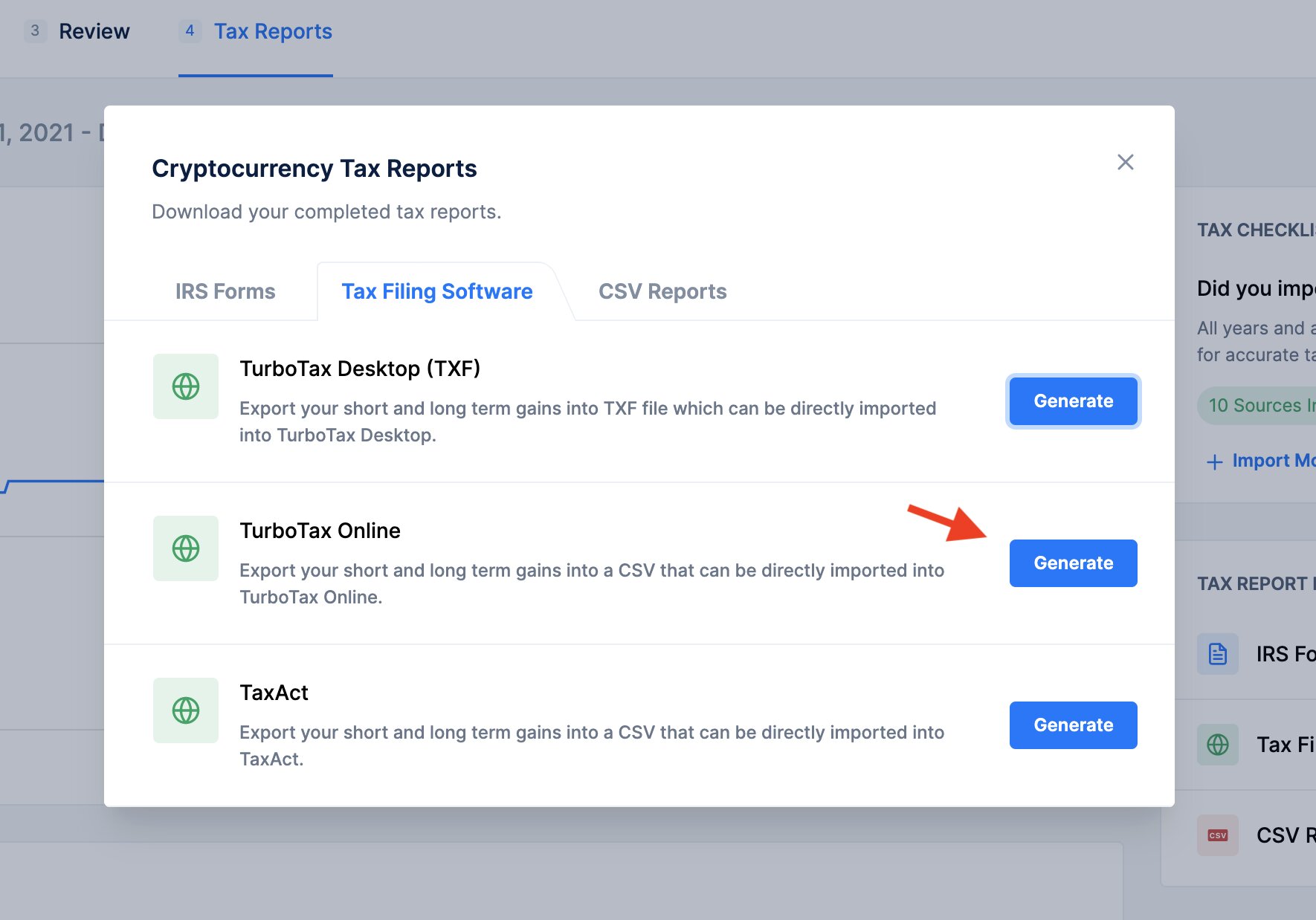Introduction
Welcome to the world of cryptocurrency, where innovation and constant evolution are the norms. One phenomenon that often causes buzz and excitement in the cryptocurrency community is a “fork”. Forks have become an integral part of the cryptocurrency ecosystem and have a significant impact on the market and the underlying blockchain technology.
So, what exactly is a fork in cryptocurrency? In simple terms, a fork occurs when there is a divergence in the blockchain’s protocol resulting in two separate chains with different rules and features. This divergence can be a result of various factors, including disagreements among the community, changes in technology, or the need for new functionalities.
Types of forks can be broadly categorized into two main types: hard forks and soft forks. Hard forks create a completely separate blockchain, whereas soft forks are compatible with the existing blockchain. The key differences between these two types of forks lie in their technical implementation and the level of consensus required from the network participants.
When a fork happens, it carries significant implications for the cryptocurrency and its community. It can lead to the creation of new cryptocurrencies or changes in the existing ones, such as altering transaction rules or introducing new features. Additionally, forks can result in a divide within the community, leading to debates and discussions on which chain to follow or support.
Handling forks requires careful consideration and coordination, as they have the potential to cause disruptions in the network. Developers and network participants must navigate through the intricacies of implementing the fork, ensuring consensus, and handling any potential issues that may arise.
In this article, we will delve into the world of cryptocurrency forks, exploring the different types of forks, the key differences between hard and soft forks, the implications they carry, and how they are handled. We will also look at some real-life examples of forks in cryptocurrency to better understand their impact.
What Is a Fork in Cryptocurrency?
A fork in cryptocurrency refers to a significant change in a blockchain’s protocol, resulting in the formation of two separate chains with different rules and features. This process is comparable to a fork in the road, where the path diverges into two separate directions.
There are various reasons why a fork may occur in the cryptocurrency world. It could be due to disagreements within the community regarding the future direction of the currency, changes in technology or security measures, or the need for new functionalities.
When a fork happens, it essentially creates two versions of the original blockchain, forming what is known as a “forked” network. Both chains share a common history up until the point of the fork, but from that point on, they operate independently, with their own set of rules and transactions.
A key aspect of forks is that they are not inherently negative or problematic. Forks can be planned and implemented as a means of improving the existing blockchain or introducing new features. Additionally, they can occur as a result of differences in opinion within the cryptocurrency community.
It’s important to note that forks can update the technology and provide opportunities for innovation within the cryptocurrency space. They can allow for the implementation of new consensus mechanisms, algorithm changes, scalability improvements, and enhance the overall user experience.
However, forks can also lead to fragmentation within a community, as users and developers may have differing opinions on which chain to support or which version of the cryptocurrency to use. This can result in the formation of distinct communities and sometimes even the creation of entirely new cryptocurrencies.
Ultimately, forks in cryptocurrency are a reflection of the decentralized nature of the blockchain technology. They provide the opportunity for individuals and communities to influence the direction and development of a cryptocurrency, but they also require careful consideration and coordination to ensure a smooth transition and minimize any potential disruption in the network.
Types of Forks
When it comes to forks in cryptocurrency, there are two primary types: hard forks and soft forks. While both types involve changes to the blockchain’s protocol, they differ in their level of compatibility and the impact they have on the existing network.
1. Hard Forks:
A hard fork occurs when the changes made to the blockchain’s protocol are not backward-compatible. This means that the new chain created by the fork is not compatible with the previous version, resulting in a complete divergence. As a result, participants in the network must upgrade to the new rules and software in order to continue using the cryptocurrency.
Hard forks often result in the creation of a new cryptocurrency, separate from the original one. This means that holders of the original cryptocurrency receive an equal amount of the new cryptocurrency. One well-known example of a hard fork is the creation of Bitcoin Cash (BCH) from the original Bitcoin (BTC) blockchain.
2. Soft Forks:
In contrast, a soft fork is a backward-compatible upgrade to the blockchain’s protocol. This means that the new rules introduced in a soft fork are compatible with the previous version, allowing participants who have not upgraded to still validate transactions on the network.
Soft forks typically involve changes that tighten the rules or add new features while keeping the existing structure intact. These changes often serve to enhance security, scalability, or introduce additional functionalities. A notable example of a soft fork is the implementation of the Segregated Witness (SegWit) upgrade on the Bitcoin blockchain.
The key difference between hard forks and soft forks lies in the level of consensus required from network participants. Hard forks require majority support and adoption to be successful, as the new chain formed needs sufficient miners and nodes to sustain itself. Soft forks, on the other hand, only require a majority of miners to upgrade in order to be effective.
It’s important to note that both hard forks and soft forks can bring about changes and improvements to the cryptocurrency ecosystem. They are tools that allow for the evolution and innovation of blockchain technology and can have significant implications for the users and communities involved.
Hard Forks
Hard forks are a type of fork in cryptocurrency that result in the creation of a completely new and separate blockchain. This means that the new chain formed by the hard fork no longer shares a common transaction history with the original blockchain. Participants in the network must choose to either continue using the original chain or switch to the new one.
A hard fork occurs when there are significant changes made to the blockchain’s protocol that are not backward-compatible. These changes can include alterations to the consensus mechanism, block size, or other fundamental aspects of the cryptocurrency.
One of the common reasons for a hard fork is the resolution of disagreements within the cryptocurrency community. These disagreements can arise from differences in opinions regarding the direction, features, or governance of the cryptocurrency. In such cases, the community may decide to initiate a hard fork to create a new chain that aligns with their vision.
When a hard fork happens, it typically results in the creation of a new cryptocurrency in addition to the original one. Holders of the original cryptocurrency automatically receive an equal amount of the new cryptocurrency, as they have a shared transaction history up until the fork point. This gives users the choice to continue using the original cryptocurrency, adopt the new one, or even hold both.
Hard forks can introduce significant changes and improvements to the cryptocurrency ecosystem. They may enhance security measures, increase transaction capacity, or introduce new features that were not possible with the original blockchain. However, hard forks can also lead to fragmentation within the community, as users and developers may have differing opinions on which chain to support.
It’s important to note that hard forks require consensus from the network participants to be successful. For the new chain to function effectively, it needs sufficient miners and nodes to support and validate transactions. This means that the success of a hard fork depends on the willingness of the community to adopt and continue using the new chain.
Examples of notable hard forks in cryptocurrency include Bitcoin Cash (BCH) which was created from a hard fork of the original Bitcoin (BTC) blockchain, and Ethereum Classic (ETC) which resulted from a hard fork following a major hacking incident on the Ethereum (ETH) network.
In summary, hard forks are a type of fork in cryptocurrency that create a new and separate blockchain. They occur when significant changes are made to the blockchain’s protocol that are not backward-compatible. Hard forks can lead to the creation of new cryptocurrencies, but also have the potential to cause fragmentation and debates within the community.
Soft Forks
Soft forks are a type of fork in cryptocurrency that involve a backward-compatible upgrade to the blockchain’s protocol. In a soft fork, the new rules introduced are compatible with the previous version, meaning that nodes and miners who have not upgraded can still validate transactions on the network.
Unlike hard forks that create a completely separate blockchain, soft forks maintain the existing chain and introduce changes that tighten the rules or add new features. These changes are designed to enhance security, scalability, or introduce additional functionalities without disrupting the consensus of the network.
One of the advantages of a soft fork is its ability to ensure a smooth transition and maintain the continuity of the existing blockchain. Nodes and miners who have not upgraded to the latest version can still participate in the network, as the new rules are designed to be compatible with the previous ones.
Soft forks require a majority of miners to upgrade their software in order for the changes to be effective. Once the new rules are implemented and adopted by a sufficient number of miners, the soft fork is considered successful, and the network continues to operate under the new protocol.
Soft forks can bring various benefits to the cryptocurrency ecosystem. They can introduce improvements, enhance security measures, or enable new functionalities without causing fragmentation within the community. Additionally, soft forks can be seen as an efficient way to roll out updates and changes to the blockchain, as they do not require a complete overhaul of the network.
One notable example of a soft fork is the implementation of Segregated Witness (SegWit) on the Bitcoin (BTC) blockchain. SegWit introduced a new transaction format that effectively increased the block size limit and improved the efficiency and scalability of the network.
It’s important to note that, despite being less disruptive than hard forks, soft forks may still require coordination and consensus from the network participants. In situations where a significant portion of the network does not adopt the new rules, a soft fork can lead to a temporary split in the blockchain, known as a chain split.
In summary, soft forks are a type of fork in cryptocurrency that introduce backward-compatible upgrades to the blockchain’s protocol. They maintain the continuity of the existing chain and enable the implementation of changes, improvements, and new functionalities. Soft forks require majority miner support and can enhance the security, scalability, and efficiency of the network without causing significant disruption or fragmentation within the community.
Key Differences between Hard Forks and Soft Forks
While hard forks and soft forks are both types of forks in cryptocurrency, there are several key differences between them in terms of their compatibility, impact on the network, and the level of consensus required for their implementation.
1. Compatibility:
The major difference between hard forks and soft forks lies in their compatibility with the existing blockchain. Hard forks create a new and separate blockchain that is not compatible with the previous version. In contrast, soft forks are backward-compatible upgrades that allow nodes and miners who have not upgraded to still validate transactions on the network.
2. Impact on the Network:
Hard forks result in a complete divergence of the blockchain, creating two separate and independent chains. Participants in the network must choose which chain to follow, and this can lead to a division within the community. In contrast, soft forks maintain the continuity of the existing blockchain and introduce changes without creating a separate chain.
3. Consensus Requirement:
To successfully execute a hard fork, there is a need for majority support and adoption from the network participants. The new chain formed by the hard fork requires sufficient miners and nodes to sustain itself. In the case of soft forks, only a majority of miners need to upgrade their software for the changes to be effective.
4. Participant Choice:
Hard forks give users a choice between two separate chains. Participants can decide to continue using the original chain or switch to the new one created by the hard fork. Holders of the original cryptocurrency typically receive an equal amount of the new cryptocurrency. Soft forks, on the other hand, do not require users to make a choice as the changes are backward-compatible with the existing network. Users who have not upgraded can still participate and validate transactions.
5. Intent and Impact:
Hard forks are often initiated to resolve disagreements within the community, implement significant protocol changes, or create a new cryptocurrency with different features. They can lead to fragmentation within the community and the birth of independent chains. Soft forks, on the other hand, are typically introduced to enhance security, scalability, or add new functionalities to the existing blockchain. They aim to bring improvements while maintaining network consensus.
Understanding these key differences between hard forks and soft forks helps to explain the varying levels of compatibility, impact on the network, and consensus required for their implementation. Both types of forks play important roles in the evolution and development of cryptocurrencies, with their own advantages and implications for the community and the underlying blockchain technology.
Implications of a Fork
When a fork occurs in cryptocurrency, it carries significant implications for the cryptocurrency and its participants. Forks can result in changes to the cryptocurrency’s ecosystem, its community, and even the value of the digital assets involved. Understanding the implications of a fork is essential for users and investors to navigate the evolving landscape of cryptocurrencies.
1. Creation of New Cryptocurrencies:
A fork can lead to the creation of new cryptocurrencies. In the case of a hard fork, a new chain is created, resulting in a separate cryptocurrency alongside the original one. This means that holders of the original cryptocurrency can receive an equal amount of the new cryptocurrency. This creation of new cryptocurrencies provides additional investment opportunities and choices in the cryptocurrency market.
2. Changes in Transaction Rules and Features:
Forks can introduce changes to the transaction rules and features of a cryptocurrency. These changes can include alterations to the consensus algorithm, block size, transaction speed, or privacy features. Forks can enhance the functionality of a cryptocurrency or address specific issues, allowing for new types of transactions or improved security measures.
3. Community Fragmentation and Debates:
A fork can lead to fragmentation within the cryptocurrency community. Different stakeholders may hold varying opinions on which chain to support or which version of the cryptocurrency to adopt. This can lead to debates, discussions, and sometimes even conflicts within the community. It is not uncommon for vocal supporters of different chains to emerge, resulting in divided communities and differing visions for the future of the cryptocurrency.
4. Uncertainties and Volatility:
Forks can introduce uncertainties and contribute to price volatility in the cryptocurrency market. When a fork occurs, it can create confusion and uncertainty among investors and traders. The valuation and market dynamics of both the original cryptocurrency and the new one can be affected. Traders and investors must carefully assess the implications of a fork and make informed decisions based on their risk tolerance and investment strategies.
5. Technical Challenges and Network Disruptions:
Implementing a fork, especially a hard fork, can present technical challenges and potential disruptions to the network. Coordinating the upgrade and ensuring a smooth transition can be complex, and issues may arise during the process. Network participants must upgrade their software and adapt to the changes brought about by the fork. Failure to navigate these technical challenges successfully can have adverse effects on the stability and functionality of the network.
Overall, a fork in cryptocurrency brings about various implications that impact the cryptocurrency’s ecosystem, community, and market dynamics. It creates opportunities for innovation and choice, but also introduces challenges and uncertainties. Understanding these implications is essential for users and investors to navigate the ever-changing landscape of cryptocurrencies and make informed decisions.
How are Forks Handled?
Handling forks in cryptocurrency requires careful coordination and consideration to ensure a smooth transition and minimize disruptions within the network. The process of handling a fork involves several key steps, including planning, communication, and technical implementation.
1. Planning:
Before implementing a fork, extensive planning is required. The development team behind the cryptocurrency typically discusses and evaluates the proposed changes or improvements. Consensus must be reached within the community on the necessity and scope of the fork, as well as the specific changes to be made.
2. Coordination and Communication:
Clear and effective communication is crucial during the fork process. The development team and community leaders should communicate the purpose, timeline, and technical details of the fork to all network participants. This helps to ensure that users, miners, and exchanges are well-informed and prepared for any actions they need to take, such as upgrading their software.
3. Software Upgrade:
For a fork to be successfully implemented, all network participants need to upgrade their software to the version that incorporates the changes introduced by the fork. Miners, nodes, and wallet providers need to install the updated software to ensure compatibility with the new rules of the forked chain.
4. Consensus Mechanism:
In the case of a hard fork, establishing consensus within the network is essential. The new chain created by the hard fork needs sufficient miners and nodes to support and validate transactions. Network participants must agree to adopt the new chain and actively participate in mining or validating transactions to maintain the new blockchain.
5. Handling Chain Splits:
In some cases, a fork may result in a temporary split of the blockchain, known as a chain split or a forked chain. In such situations, community leaders and developers play a crucial role in managing the process. They may provide guidance on which chain to follow, offer support for users and exchanges in transitioning to the new chain, or help resolve any potential issues that arise.
6. Continuous Support and Maintenance:
After a fork occurs, ongoing support and maintenance are necessary to ensure the smooth operation of the network. Development teams and community leaders should continue to address any technical issues, provide software updates or bug fixes, and offer assistance to users and businesses as they adapt to the changes brought about by the fork.
Successfully handling a fork requires collaboration, open communication, and technical expertise. It is crucial for all network participants to stay informed, follow the guidelines provided by community leaders, and take the necessary steps to upgrade their software to ensure a seamless transition and continued operation of the cryptocurrency network.
Examples of Forks in Cryptocurrency
Forks have been a significant part of the cryptocurrency ecosystem, leading to the creation of new cryptocurrencies and shaping the landscape of digital assets. Here are a few examples of notable forks in cryptocurrency:
1. Bitcoin Cash (BCH):
In August 2017, Bitcoin Cash was created from a hard fork of the original Bitcoin (BTC) blockchain. The fork was initiated to address scalability issues and increase the block size limit. Bitcoin Cash introduced larger block sizes, allowing for faster and cheaper transactions compared to Bitcoin. BCH has since gained its own community and market presence, offering an alternative version of digital cash.
2. Ethereum Classic (ETC):
Ethereum Classic emerged as a result of a hard fork following a major hacking incident on the Ethereum (ETH) blockchain in 2016. The hard fork was intended to reverse the hack and return the stolen funds to their rightful owners. However, a portion of the Ethereum community disagreed with the decision to modify the blockchain’s history and, consequently, Ethereum Classic was created as a continuation of the original Ethereum blockchain.
3. Litecoin Cash (LCC):
In early 2018, Litecoin Cash was launched as a hard fork of the original Litecoin (LTC) blockchain. This fork aimed to introduce changes to the mining algorithm, allowing for the use of ASIC hardware and increasing the transaction processing speed. Litecoin Cash intended to offer an alternative version of Litecoin with improved scalability and security measures.
4. Monero (XMR) Forks:
The privacy-focused cryptocurrency Monero (XMR) has experienced multiple forks over the years. One noteworthy example is MoneroV (XMV), which forked from the Monero blockchain in 2018 and aimed to implement changes regarding transaction speed and scalability. Other notable Monero forks include Monero Classic (XMC) and Monero Original (XMO), which aimed to maintain the original principles and resist ASIC mining domination.
5. Zcash (ZEC) Forks:
Zcash, known for its focus on privacy and anonymity, has also seen several forks. Zclassic (ZCL) emerged as a hard fork from Zcash in 2016, with the intention of removing the founder’s reward and transitioning to a community-driven project. Additionally, Ycash (YEC) forked from Zcash in 2019 to prioritize mining with commodity hardware and optimize the blockchain’s performance.
These examples illustrate the diverse reasons for forks in cryptocurrency, including scalability concerns, disagreements within the community, or the desire to maintain specific principles and features. Forks offer opportunities for innovation, provide choices for users and investors, and can shape the future of digital assets.
Conclusion
Forks play a significant role in the ever-evolving world of cryptocurrency. They are pivotal moments that can bring about changes, create new cryptocurrencies, and shape the trajectory of the underlying blockchain technology. Understanding the different types of forks, their implications, and how they are handled is essential for individuals and businesses involved in the cryptocurrency ecosystem.
Hard forks result in the creation of new and separate blockchains, often leading to the birth of new cryptocurrencies. They are typically initiated to address disagreements within the community, introduce significant protocol changes, or create alternative versions with distinct features. Soft forks, on the other hand, are backward-compatible upgrades that maintain the continuity of the existing blockchain while implementing changes, improvements, or new functionalities.
The implications of a fork are wide-ranging. Forks can introduce new cryptocurrencies, change transaction rules and features, cause community fragmentation, create uncertainties, and present technical challenges. However, they also provide opportunities for innovation, enhance security measures, and improve the overall functionality of cryptocurrencies.
Forks are handled through careful planning, coordination, and communication. Development teams and community leaders must ensure that network participants are well-informed about the fork’s purpose, timeline, and technical details. Consensus is crucial, whether it involves miners upgrading their software or the community deciding which chain to follow.
Examples of forks in cryptocurrency, such as Bitcoin Cash, Ethereum Classic, and Litecoin Cash, demonstrate the impact and diversity of forks in the cryptocurrency landscape. Each fork brings its own set of changes, motivations, and outcomes, resulting in the formation of new communities and investment opportunities.
In conclusion, forks are a reflection of the dynamic nature of the cryptocurrency ecosystem, where consensus, innovation, and individual participation shape the course of development. As the cryptocurrency space continues to evolve, forks will continue to play a crucial role in driving innovation, improving functionality, and providing choices for users and investors in the exciting world of cryptocurrencies.

























